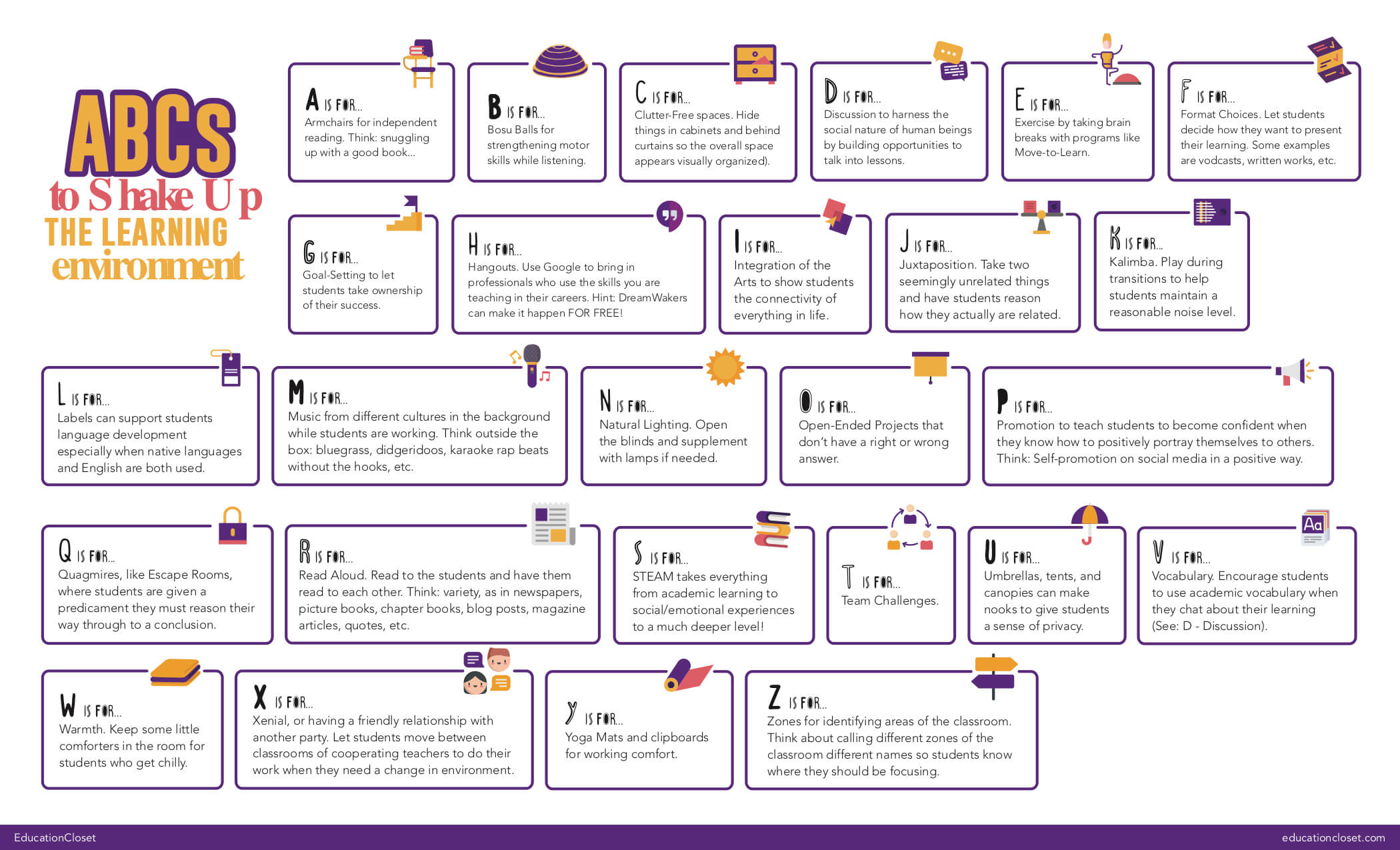ABCs to Shake Up the Learning Environment
3 Min Read • Student Engagement
“Learning Environment” is a broad term that is defined around the internet as being the diverse contexts, physical spaces, and cultures where students learn. When I think of contexts for learning, I think of a wide array of ways that students receive their instruction and present their learning. So, with that in mind, I brainstormed a list of unconventional considerations for learning environments.
Let this list lead your imaginative teacher brains on the path to shaking up the learning environment where you teach.
A is for…Armchairs for independent reading. Think: snuggling up with a good book…
B is for…Bosu Balls for strengthening motor skills while listening
C is for…Clutter-Free spaces. Hide things in cabinets and behind curtains so the overall space appears visually organized).
D is for…Discussion to harness the social nature of human beings by building opportunities to talk into lessons.
E is for…Exercise by taking brain breaks with programs like Move-to-Learn.
F is for…Format Choices. Let students decide how they want to present their learning. Some examples are vodcasts, written works, etc.
G is for…Goal-Setting to let students take ownership of their success.
H is for…Hangouts. Use Google to bring in professionals who use the skills you are teaching in their careers. Hint: DreamWakers can make it happen FOR FREE!
I is for…Integration of the Arts to show students the connectivity of everything in life.
J is for…Juxtaposition. Take two seemingly unrelated things and have students reason how they actually are related.
K is for…Kalimba. Play during transitions to help students maintain a reasonable noise level.
L is for…Labels can support students language development especially when native languages and English are both used.
M is for…Music from different cultures in the background while students are working. Think outside the box: bluegrass, didgeridoos, karaoke rap beats without the hooks, etc.
N is for…Natural Lighting. Open the blinds and supplement with lamps if needed.
O is for…Open-Ended Projects that don’t have a right or wrong answer.
P is for…Promotion to teach students to become confident when they know how to positively portray themselves to others. Think: Self-promotion on social media in a positive way.
Q is for…Quagmires, like Escape Rooms, where students are given a predicament they must reason their way through to a conclusion.
R is for…Read Aloud. Read to the students and have them read to each other. Think: variety, as in newspapers, picture books, chapter books, blog posts, magazine articles, quotes, etc.
S is for…STEAM takes everything from academic learning to social/emotional experiences to a much deeper level!
T is for…Team Challenges.
U is for…Umbrellas, tents, and canopies can make nooks to give students a sense of privacy.
V is for… Vocabulary.Encourage students to use academic vocabulary when they chat about their learning (See: D – Discussion).
W is for…Warmth. Keep some little comforters in the room for students who get chilly.
X is for…Xenial, or having a friendly relationship with another party. Let students move between classrooms of cooperating teachers to do their work when they need a change in environment.
Y is for…Yoga Mats and clipboards for working comfort.
Z is for…Zones for identifying areas of the classroom. Think about calling different zones of the classroom different names so students know where they should be focusing.




